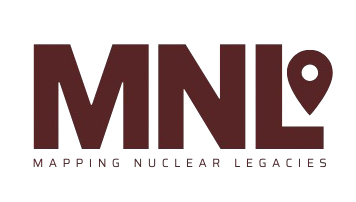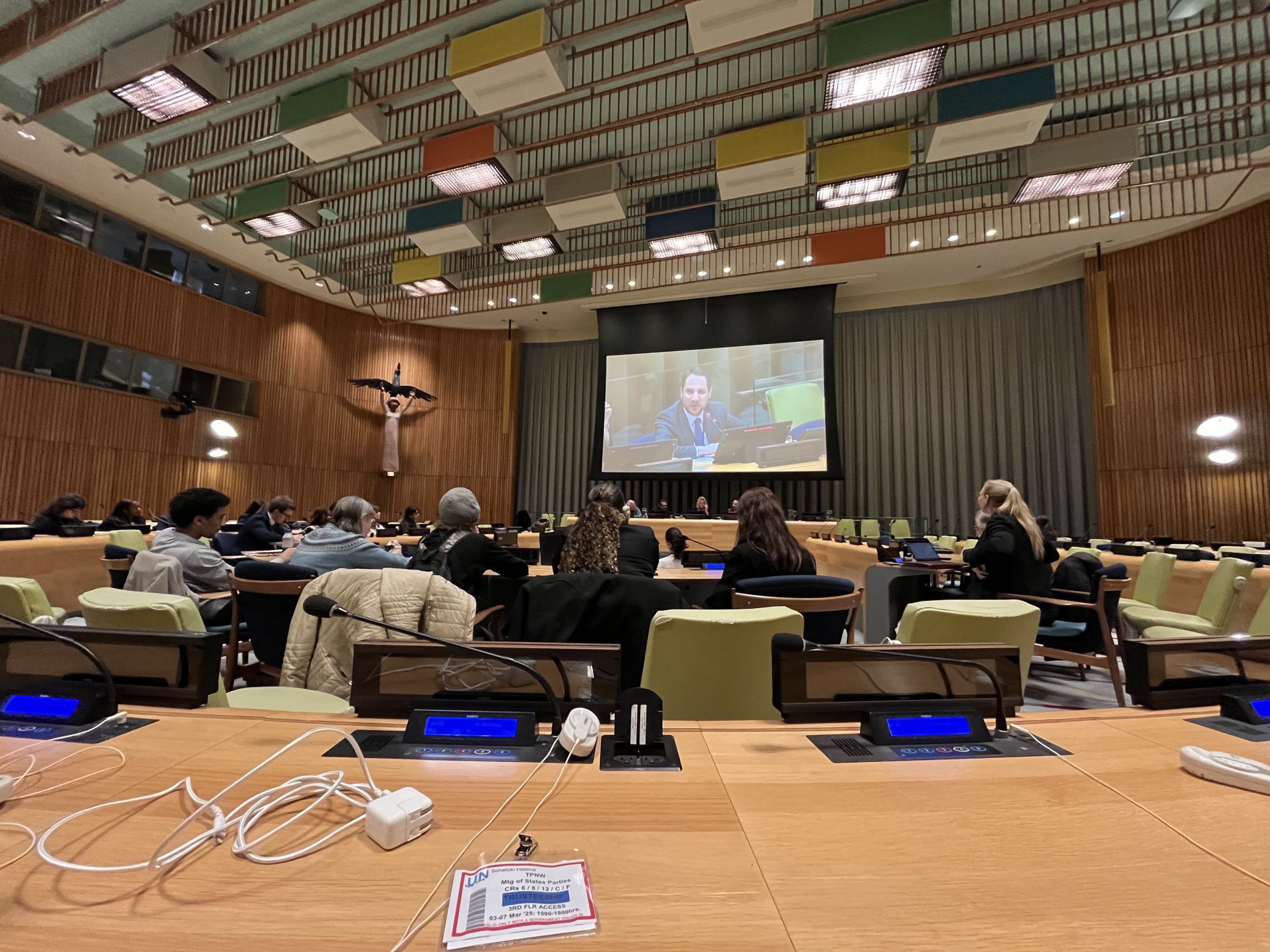On March 5, Mexico and The International Campaign to Abolish Nuclear Weapons (ICAN) sponsored the side event Fábulas Atómicas – Artists Against the Bomb at the third Meeting of States Parties (3MSP) to the Treaty on the Prohibition of Nuclear Weapons (TPNW). Artists Against the Bomb is an international poster campaign advocating for nuclear disarmament, organized by artist Estudio Pedro Reyes in collaboration with ICAN. By highlighting this initiative, the side event showcased the relationship between the arts and nuclear weapons, emphasizing the influential role of culture in nuclear advocacy.
Held in the UN Trusteeship Council, the side event featured a panel discussion with Pedro Reyes (Artists Against the Bomb), Ben Cohen (Ben & Jerry’s), Melissa Parke (ICAN), and Eduardo Alcibiades Sanchez Kiesslich (Permanent Mission of Mexico to the UN). Reyes, who has spearheaded the Artists Against the Bomb initiative, explained how each poster in the collection is designed by a different artist and in black and white so that they can be printed locally, allowing for inexpensive production. These practices diverge from those of traditional exhibitions, making the collection easy to deploy and have an accessible global reach. Reyes’ recent work titled Fábulas Atómicas—a series of videos addressing nuclear disarmament—was projected during the side event. The videos feature a range of perspectives on nuclear histories, covering topics such as censorship following the bombing in Hiroshima, the establishment of treaties for nuclear free zones in South America, Africa, and Pacific states, and lasting damages from nuclear testing in Bikini Atoll.
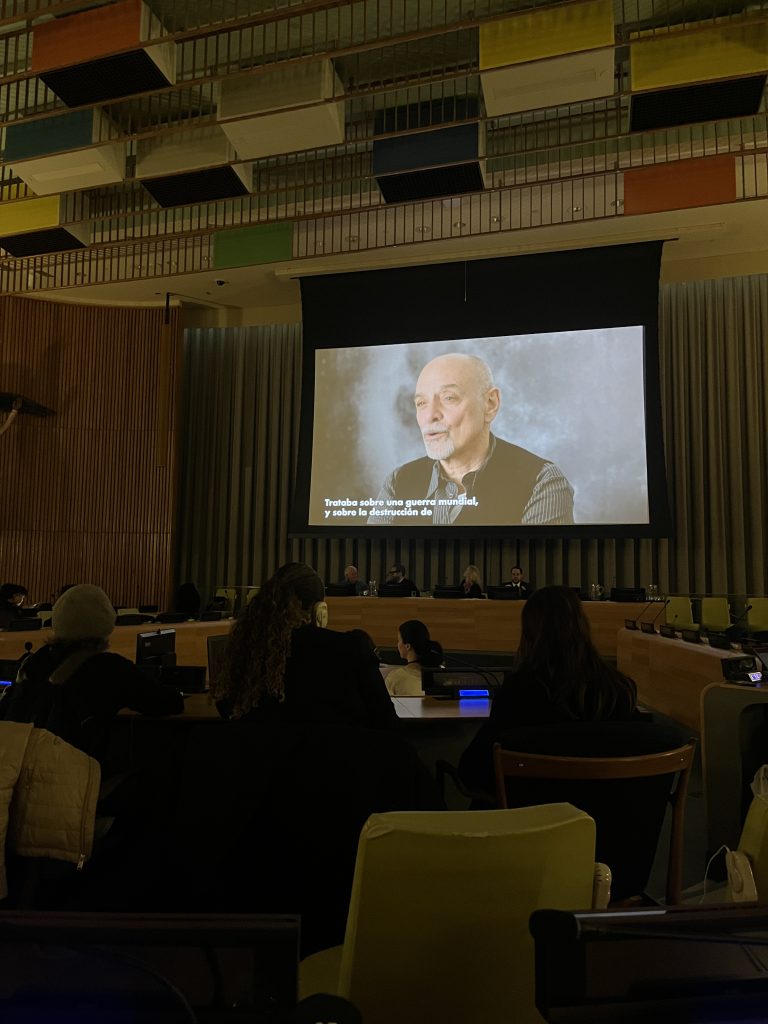
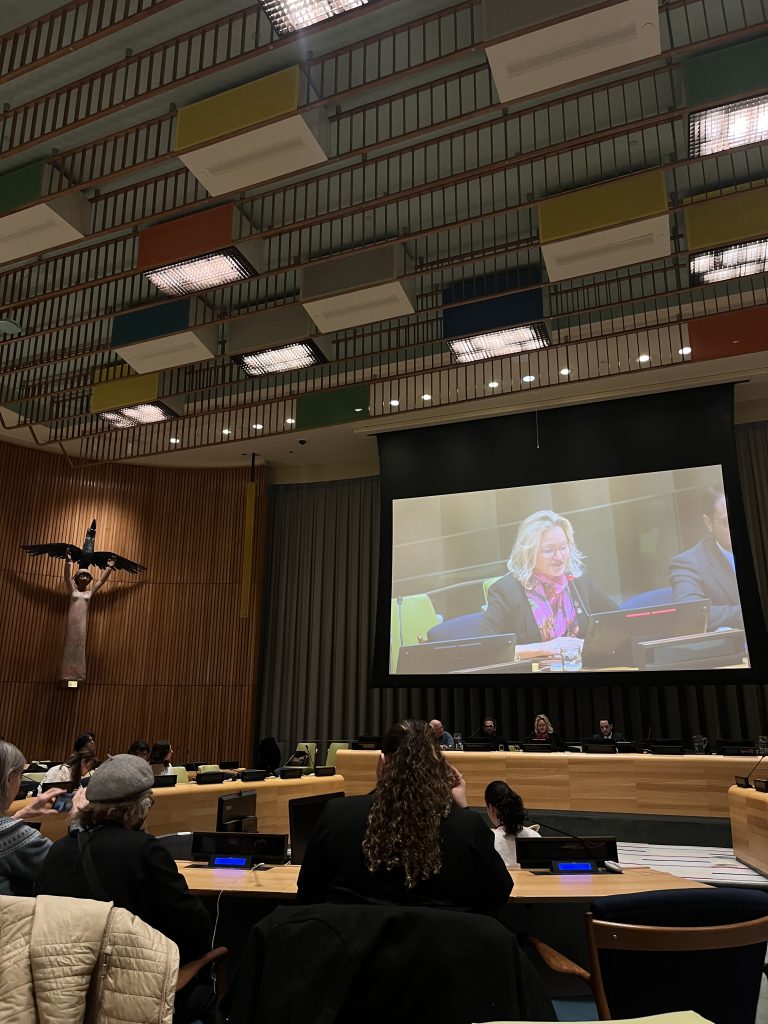
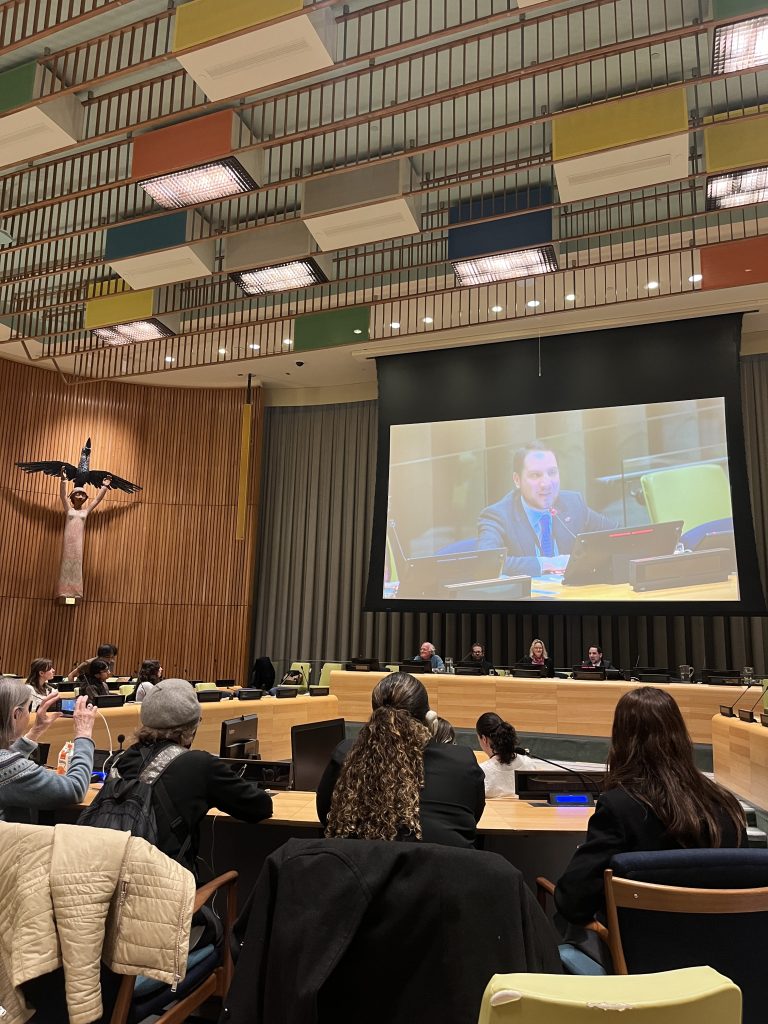
Popular culture emerged as a central theme of the panel’s discussion. Ben Cohen, co-founder of Ben & Jerry’s, commented that there is a problem with our leaders, but popular culture provides a solution. Reyes additionally remarked upon the influence of popular culture, reflecting on its ability to fuel both militarism and opposition. Ultimately, he highlighted popular culture’s capacity to inspire imagination and courage to fight against war machines.
The panelists reflected on the need to change the nuclear narrative in popular culture. Historically, popular culture has focused on the mushroom cloud as opposed to the human consequences below the cloud. Nuclear weapons have been kept out of sight, out of mind; the general public often knows little about nuclear weapons beyond the atomic bombings of Hiroshima and Nagasaki, let alone the TPNW. Therefore, producing cultural works that fill those gaps is key. Art holds the unique power to inform the general public about nuclear weapons.
Speaking on this, Cohen discussed how a public relations campaign can attract media attention to the issue. He argued that nuclear weapons have to become a primary concern for voters, and through popular culture, a population of voters against nuclear warfare can be mobilized. Fundamentally, politicians come and go, but the people stay. Long term action can be achieved through the people. This echoes our work with Mapping Nuclear Legacies, researching city and community-level responses to nuclear weapons. The discussion of the importance of people-level initiatives held at this side event parallels grassroot and city-level actions, and I’m curious how the arts and popular culture can be further integrated into these movements.
The discussion turned to the power of humor—a conversation that especially resonated with me as an artist. They explored how with a subject as difficult and emotional as nuclear weapons, humor can serve as an influential tool for propelling hope through harnessing absurdity and ridicule. Fundamentally, these are deeply human stories. The heart of these stories must be kept center to this work—only then can thoughtful and impactful public engagement occur. Ultimately, art possesses a keen ability to express humanity to the masses.
